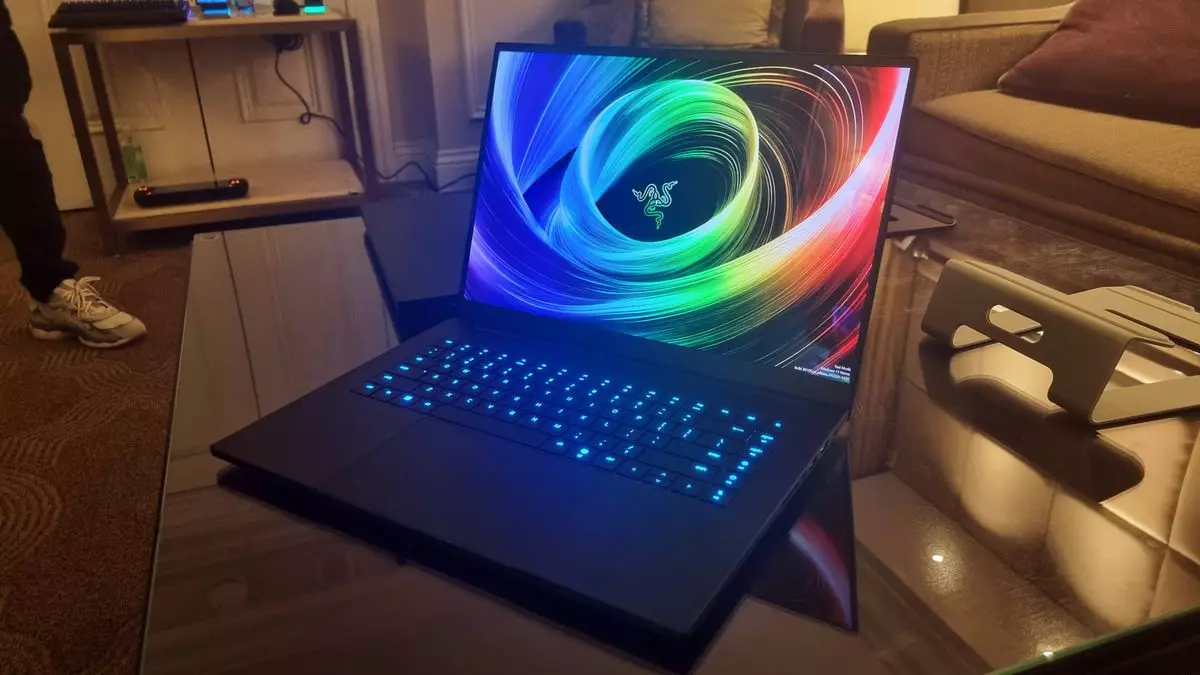Razer has cultivated a strong reputation in the gaming laptop market, often being lauded as the “MacBook” of this niche. This moniker, while flattering, also raises questions about the philosophy underpinning their products. The company is known for creating sleek devices that boast impressive specifications; however, this comes at a significant cost. Razer’s pricing policies reflect a high-end branding strategy akin to Apple’s, which can alienate budget-conscious gamers. The phenomenon known as the “Razer Tax” has long placed their laptops at a premium—charging hundreds more than comparably-equipped machines from rivals. Yet, recent developments suggest a subtle shift in their pricing philosophy that potential consumers may find intriguing.
The announcement of the Razer Blade 16 has reignited discussions about value in the gaming laptop space. Starting at $2,800 for the RTX 5070 Ti and $3,200 for the RTX 5080, these prices might initially shock prospective buyers. To put things into perspective, comparing it to its predecessor, a model from 2024 featuring the RTX 4080 was priced at a staggering $3,600, making the new iteration appear more reasonable. Additionally, the previous RTX 4070 model was pitched at $3,000, further highlighting how the Blade 16’s pricing positions itself against its historical benchmarks. What truly excites potential users, however, is the combination of advanced features included in the Blade 16, such as a 240 Hz OLED QHD+ screen, a substantial 1 TB SSD, and 32 GB of memory. These specs reveal Razer’s commitment to balancing performance with competitive pricing.
One of the most noticeable improvements in the Blade 16 is its reliance on AMD’s Ryzen AI 9 365 processor. This chipset promises to deliver robust computing power, particularly appealing to those keen on performance-intensive tasks. There is even an option for a high-end RTX 5090 configuration, which upgrades storage to 2 TB and bumps the processor to the Ryzen AI 9 HX 370—albeit at a lofty price point of $4,200. However, skepticism looms over whether the value of such an investment truly justifies its cost. Historically, Razer products have taken a hands-off approach toward serious price reductions; thus, the recent changes seem to reflect increased competition, particularly from rivals like Asus and its highly regarded ROG Zephyrus line.
Razer’s long-standing dominance is being challenged by competitors like Asus, particularly with their ROG Zephyrus series. While the Zephyrus models are aesthetically pleasing and loaded with advanced features, they are known to throttle performance. This aspect plays into Razer’s hands as the Blade 16 maintains a reputation for delivering raw power without restrictions. However, the price difference could sway many toward Asus if they continue to release cheaper alternatives in a still competitive gaming laptop market. As companies like Asus usher in more cost-effective gaming options, it shines a light on Razer’s ability to adapt—or potentially falter.
As we observe the shifts in Razer’s pricing strategy, one thing remains apparent: the gaming laptop market is evolving. While Razer’s recent minor adjustments in their pricing might hint at an awareness of competition, it leaves us questioning the longevity of their premium pricing model. The Blade 16 may be a step in the right direction, but it’s imperative that Razer continues its momentum of incorporating practical pricing strategies without compromising quality or performance. Though glancing at the competition, one might hope for continued evolution in both technology and user accessibility.
Razer’s journey remains intertwined with the larger narrative of the gaming market. By offering competitive models that reflect changing consumer expectations and enhance their brand’s prestige, they can continue appealing to gamers seeking not just a laptop but a holistic gaming experience.

